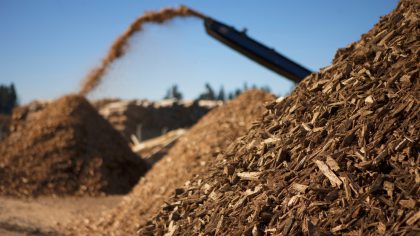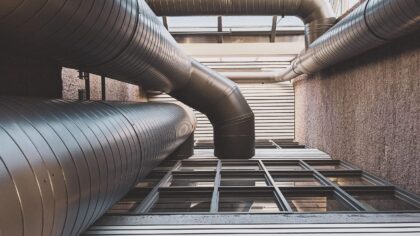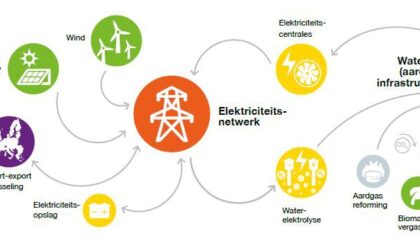Oxyfuel Combustion CO₂ Capture for Power Plants – gaseous fuels
In this factsheet a generic solution to capture CO2 from flue gases after the combustion of gaseous carbon-rich fuels such as natural gas or biogas mixed with high purity oxygen in power plants is considered. Low-carbon gases such as hydrogen are not considered.
Downloads
Download hier de datasheet (PDF)The combustion with high purity oxygen makes for a high concentration of CO2 in the flue gas (>80%), from which the remaining water vapour is removed by cooling and compressing the gas stream resulting in high purity CO2 (IPCC, 2005). The main cost component is therefore not in the CO2 capture, but in the cryogenic air separation for oxygen production. There may be different requirements for flue gas cleaning depending on the fuel used (dust filters, NOx removal, sulphur scrubbers, etc.) which will influence performance and costs. The performance and cost ranges are considered to be sufficiently close for the variety of gaseous carbon-rich fuels to group them together in one factsheet.
The focus of this factsheet is solely on oxyfuel combustion CCS at power plants operating on gaseous fuels. The reference power plant is a combined cycle gas turbine (CCGT) without CCS and all reported data is relative to it (e.g. investment costs are additional costs for equipment suitable for high combustion temperatures, oxygen production and carbon capture, which means that the reported data does not include investment costs for the power plant itself). Plants can be retrofitted with oxyfuel CCS technology (JRC, 2014).
Compression and dehydration is part of the CO2 capture process. CO2 pressure after capture is around 11 MPa (IEAGHG, 2015). At this pressure it is possible to transport the CO2 through low-pressure pipelines (maximum pressure of 4.8 MPa) or high-pressure pipelines (minimum of 9.6 MPa; see IPCC, 2005) without any additional compression required. If CO2 is transported in liquid state, then additional compression will be required. Transport by pipeline is considered the default option and compression costs and energy requirements are therefore not included in the factsheet.
All information in the datasheets is also available in ESDL (Energy System Discription Language). You can find them in the Energy Data Repository (EDR).Gerelateerde publicaties

Groen gas uit biomassavergassing
Huidige instrumentarium onvoldoende voor opschaling

